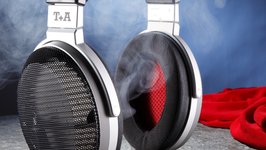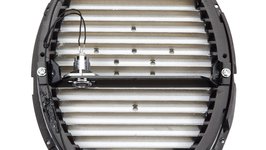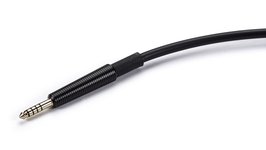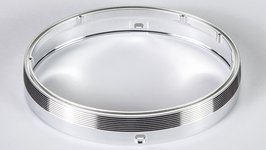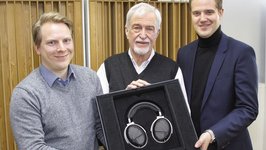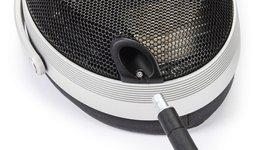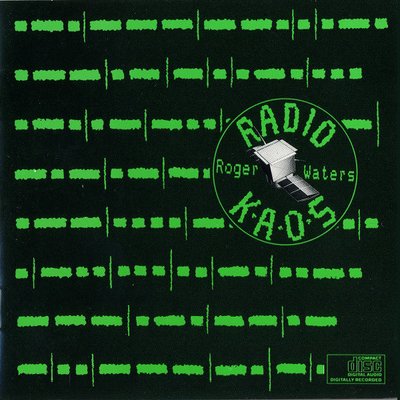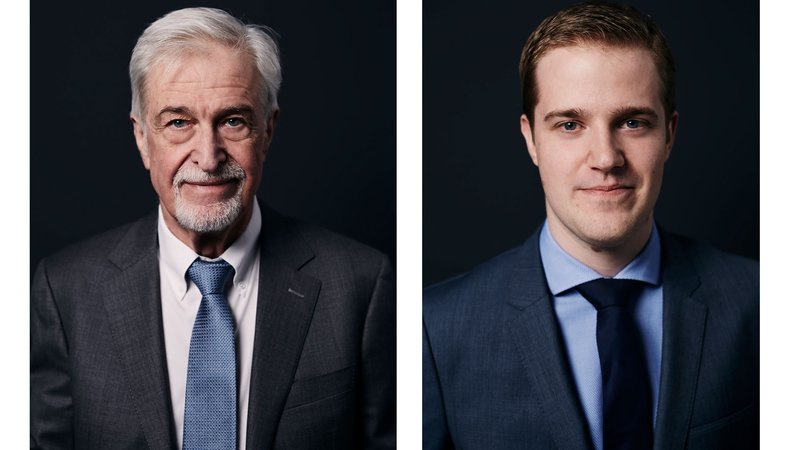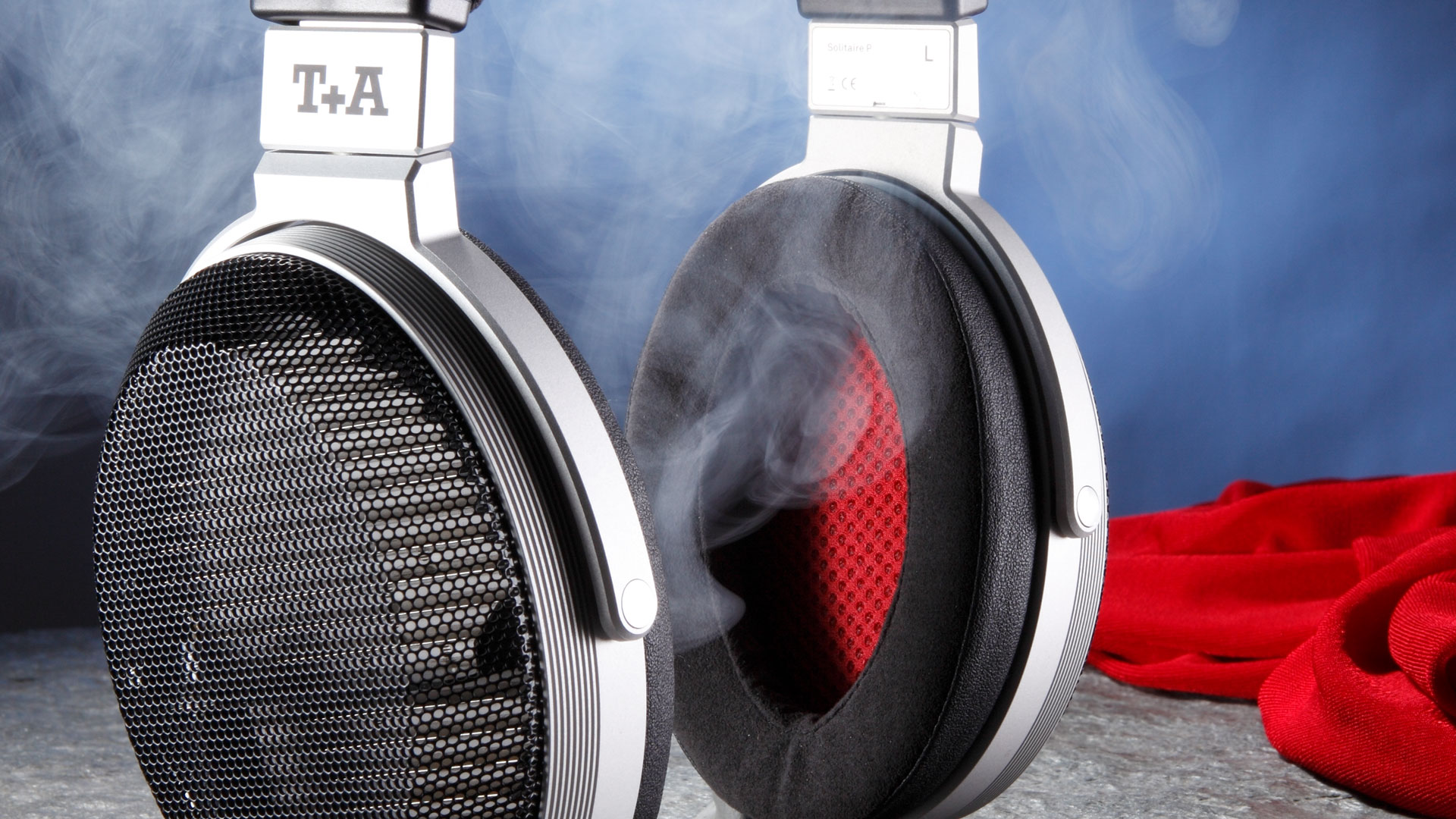
Headphone Test
T+A Solitaire P Review
A Bold Leap – T+A has taken a bold leap into new territory by presenting the Solitaire P planar magnetic headphones – the first of their kind in the company's history. Thanks to new technical approaches, they are immediately competing with the absolute best in sound quality...
"We may not be the first, but we will do everything to become the best", seems to be what the Germans from T+A must have thought last year when they set about putting the idea of a state-of-the-art headphone into practice. Keeping with the company's philosophy, the engineers around CEO Siegfried Amft did exactly what they have been internationally and nationally known for over the last four decades: they did their job carefully, thoroughly and provided the result with a generous amount of musical inspiration.
The result is a planar magnetic headphone of the highest price and quality class that is entirely and flawlessly manufactured in Germany. In terms of sound is not only another small step, but rather a bold leap towards even more enjoyable listening compared to the extensive competition.
The expense and attention to detail applied to the 530 gram heavy private listener is obvious even at first glance: the elliptical aluminum shells in which the drivers are embedded are manufactured from solid blocks of material using a highly precise five-axis milling machine in a very time-consuming process. Any replacement of the soft, leatherette-wrapped ear cushions can be done in a few moments, even by untrained hands. The connection panel for the exchangeable cables, which can be connected to the amplifier with the classic 6.3 millimetre jack plug or with the pentaconn plug is also included in the scope of delivery and is easy to handle. The attention to detail is also reflected in the bracket and the connection piece to the shell – all aluminum, all solid, all made in Germany.
Still, all of this effort would be a waste of time if the technical side couldn't keep up.
High Efficiency, Low Impedance
After the decision was made to develop a planar headphone, the development team, which was led by two engineers who had been working exclusively on the Solitaire for more than a year, was particularly challenged by the set goals of achieving high efficiency yet with a matching low impedance. After all, T+A wanted their first headphone to have outstanding dynamic capabilities, while still being compatible with a wide range of source devices.
In order to lift the efficiency to the extreme, the company decided to use the strongest neodymium bar magnets available on the worldwide market and arranged them in such a way that the force is applied absolutely uniformly over the entire conductor surface of the ultra-thin, extremely precisely coated membrane. A total of almost 10 metres of conductor tracks have been applied here. The bar magnets of varying lengths, which were precisely adapted to the oval shape of the membrane and precisely calculated in their circular segment shape, allowed to provide a previously unattainably homogeneous magnetic field. The result of these huge efforts is the total absence of sound damaging modes and thus an extremely distortion-free driver. Furthermore, it is therefore no longer necessary to arrange magnets on both sides of the diaphragm, saving considerable weight and at the same time allowing the diaphragm to move unimpaired towards the ear.
Acoustic fine tuning with the asymmetrically installed magnets was also a time-consuming task, especially since the shape, thickness and material of the ear pads also affect the sound. "It was a time of intense learning," the Germans of T+A freely admitted. Even though headphones seem to do little more than a loudspeaker, the requirements in headphone construction differ fundamentally in many respects from those of their colleagues who have to provide sound for entire rooms. After all, do you know anyone who has successfully built a headphone themselves?
Even the padding for the headband and the ear cushions are made of anti-allergenic synthetic leather and Alcantara, which T+A does not buy from somewhere in the Far East, but from a specialized German company.
With the two connection cables supplied, each 3 metres long, also a special solution had to be found, since the developers wanted a symmetrical cable with low capacitance and an impedance matched to the drivers. In addition, the cable had to be flexible, easy to clean and durable. Of course it should have a maximum of microphone resistance. Long-term stability also had to be ensured, which is why the entire cable is cast and sheathed in a single operation. The material chosen was high-purity copper with a precisely specified ultra-thin silver coating. Of the 20 or so suppliers who contribute to the success of this total work of art, the cable supplier is incidentally the only Far Eastern supplier, because despite intensive research and best contacts, T+A could not find a German comapny who could have fulfilled all there conditions.
Perfect Fit
The first impression of wearing the Solitaire P – for Planar – was positive: the pressure on the head as well as on the ears was between low and moderate, the position was comfortable but still pleasantly firm and individually adjustable via fine click-stops in the headband. The weight was evenly distributed. In addition, the Solitaire has a feel to it that one must have experienced. Nothing creaks and cracks, the quality of touch makes you think about visiting an expensive watch dealer. Everything seems to be built for eternity, and the open construction and the breathable padding prevented heat accumulation.
The matching HA 200 headphone amplifier was not yet ready during Siegfried and Conradin Amft's visit to our editorial office, who were accompanied by project manager Max Kirschke.
Spacecraft
So we used the T+A with a number of headphone amplifiers we were familiar with, and tested its wearing comfort for several hours at a time. Once again Charlie Byrd was the first to take his turn, as this recording is in many respects an excellent way of getting to the bottom of a device's sonic characteristics. Sometimes the guitar of the master can sound somewhat thin and metallic, but via the Solitaire it was full-bodied, yet without a trace of being bloated. The double-bass is of an exquisitely dry character, placed as a large-volume wooden resonator, deeply offset into the lefthand side of the stage, while the drums on the right are unquestionably recognizable as such. Also the occasional unevenly faded clapping of the audience takes place on the entire, unusually large imaginary stage. A great pleasure is the tenor saxophone played by Seldon Powell, which is reproduced in great detail and yet full of warmth and grace – just as it should be.
Outstanding, too, how meticulously Roger Waters' bass on "Radio Waves" is distinguished from the other instruments, however without neglecting the important aspect of homogeneity. This holistically convincing reproduction with complete freedom from discontinuity over the entire frequency range, and at the same time excellent speech intelligibility, is perhaps the greatest of the abundant qualities of these headphones.
The next test had to be mastered with orchestra and piano: incredibly clean and structured, however not indifferent at all but rather emotionally engaged and gripping. When we talk about emotionality, the name Eva Cassidy is often mentioned even many years after her death. Her version of "Fields of Gold" easily tips over to becoming annoying in her Sibilants. If there is a fault somewhere in the system, she occasionally sounds very "skinny". The Solitaire P also took this challenge with amazing easy.
During their visit to our editorial office, the T+A crew promised that the Solitaire P would play dynamically with almost no limits. We put it to the test with Peter Gabriel's "Come, Talk To Me" – and were astounded. The way the synthetic bass sounded perfectly dry and mighty was what finally convinced us that T+A had by no means come up with a "me too" product, but rather that they have reached for the absolute limits in terms of sound as well as materials and effort.
Despite the price tag, the "want to have" effect is absolutely present! T+A has achieved the almost impossible, and has developed a reference headphone from scratch. Congratulations on this magnificent entry to a new market!
Verdict
Open back planar magnetic headphones that set new standards in terms of sound quality as well as workmanship. Very spacious sound image. Tonality with natural warmth and deep, incredibly clean bass range. High wearing comfort despite 530 grams of weight.
Technical Details
Headphone
T+A Solitaire P
Price: ca. 5200 € (Last check: 13.10.2022)
Weight: 0.53 kg
Warranty: 2 years (/bei Registrierung 36 Monate)
Manufacturer: T+A elektroakustik GmbH & Co KG
General Data
Stereo Test
Sound Level Headphone: 100%
Price/Performance
Features
Cable with 6.3mm jack and pentacon connector, each 3m long and interchangeable; pads interchangeable, softly padded headband, adjustable in fine click-stops; high efficiency with just over 100 dB, impedance 80 ohms; extremely low distortion; very high quality with a lot of aluminum.
Test Devices
CD Player: Cayin CS 100; T+A MP 2500 R;
Headphone Amp: Sennheiser HDV 820; Exposure XM HP; Octave V16
Headphone: Sennheiser HD 800S; HifiMan HE 1000SE; Grado PS 2000E
Cable: Supra
What we've heard
Roger Waters – Radio KAOS: A classic of the Ex-Pink-Floyd bassist of lasting value and very good sound.
Interview with Siegfried and Conradin Amft
After more than 40 years you have launched your first headphones. Why have you waited until now?
S.Amft: There is a simple answer to that: we have too many good ideas and we are perfectionists, so we only start new projects when the existing ones are perfectly finished. We are obsessed with technology and therefore we develop all our products ourselves, from software to hardware. We have expanded our portfolio enormously over the last 10 years, from lifestyle products to absolute high-end components. There was no time for additional product groups. The "Headphone" project has been running since the beginning of 2019 and a team of between four and six developers will create a complete range of headphones and matching amplifiers within two years.
The development of a headphone differs significantly from loudspeakers. How did you proceed during the development and what role did the measurement technology play?
S.Amft: Quite deliberately our first headphone is a planar magnetic system, since we have more than 35 years of experience with planar drivers thanks to our electrostats. Headphones do, of course, not only consist of the driver, but to a large extent of the mechanic construction, which is an area were we have very capable engineers, as our products show. For us, measurement technology is always the basis of a development. We have converted our loudspeaker development and final inspection to using the most modern (German) measurement technology and at the same time we have also purchased the complete measurement technology for headphone development and production. Further, with Max Kirschke we have an engineer who is very familiar with the topic.
What can we expect from T+A in the headphones sector in the future?
C. Amft: A lot - our goal is to launch a complete portfolio in a comparatively short time. Just as with our electronics, we deliberately want to present different concepts at different price points. So far our focus has been on the audiophile sector, but we also see potential for high-quality, high-priced luxury travel headphones, particularly in the Anglo-American market. Here too it is certain that we want to do the development ourselves, and not simply label third-party ideas as T+A.
T+A stands for "Made in Germany" like few others in the industry. Is the status of German engineering in Germany and around the world as high as ever?
C. Amft: Yes and no. The reputation of German engineering performance is still high. However, other countries are now quite equal, if you look at the reputation of manufacturing capability alone. That is why it must now be linked to additional aspects. It is especially the combination of design, longevity and a construction in complete systems that can convince customers worldwide. However, Germany will only retain its excellent reputation in the long term if we continue to be the birthplace of technically leading ideas and concepts.
The introduction of your son Conradin Amft heralds a generational change for you. When and how will the leadership be passed on?
S. Amft: The generation change does not only affect myself, but a number of executives. 60% of our employees have been with us for more than 25 years. After his bachelor's degree, my son gained very interesting experience at two great companies (luxury goods and electronics) and is currently doing an Executive Master's at Zeppelin University in Friedrichshafen. Conradin has introduced modern project management and controlling to our company and is now building a global marketing concept with international agencies. I think that in about five years I can largely retire and hand over the management to Conradin.
Do you believe in a great future for high-quality HiFi/ HighEnd in Germany and worldwide – and what will it look like?
C. Amft: Short answer: yes. We see great growth especially in Asia and the USA. However, consumer behaviour is changing: the number of "classic high-end" products is declining. They are increasingly being replaced by luxury buyers who show a comparable willingness to spend money, but for different reasons. If we succeed in addressing and convincing both groups, I see the future of high end or hi-fi very positively.
 MAGAZINE
MAGAZINE